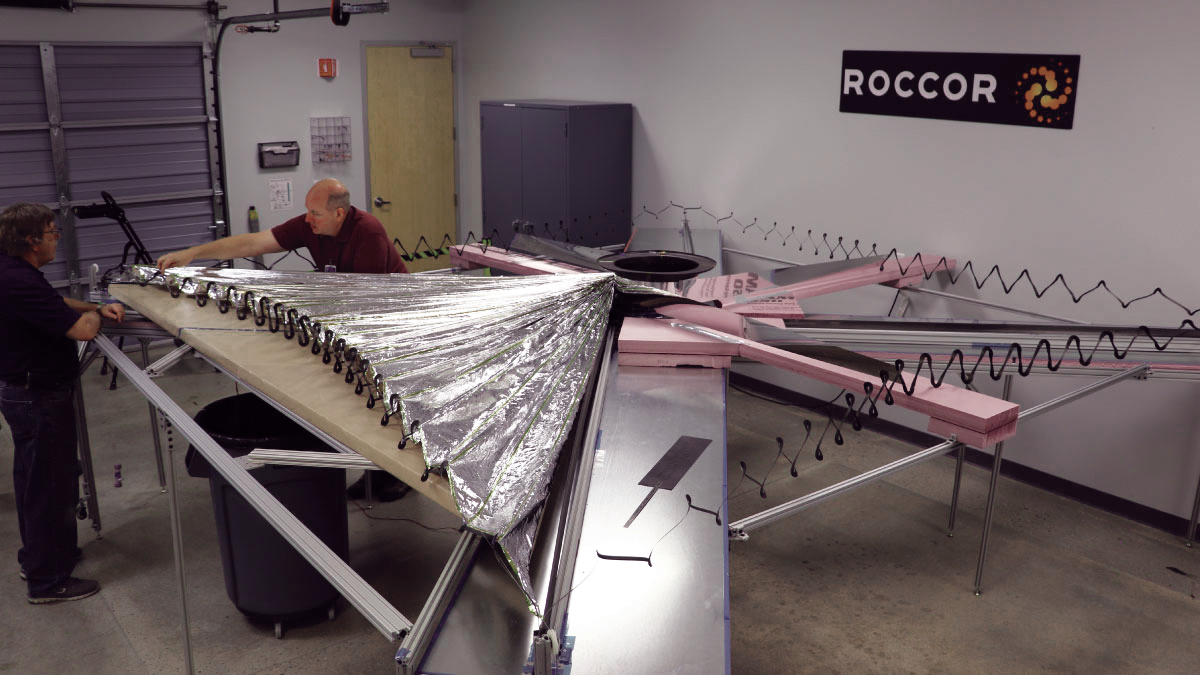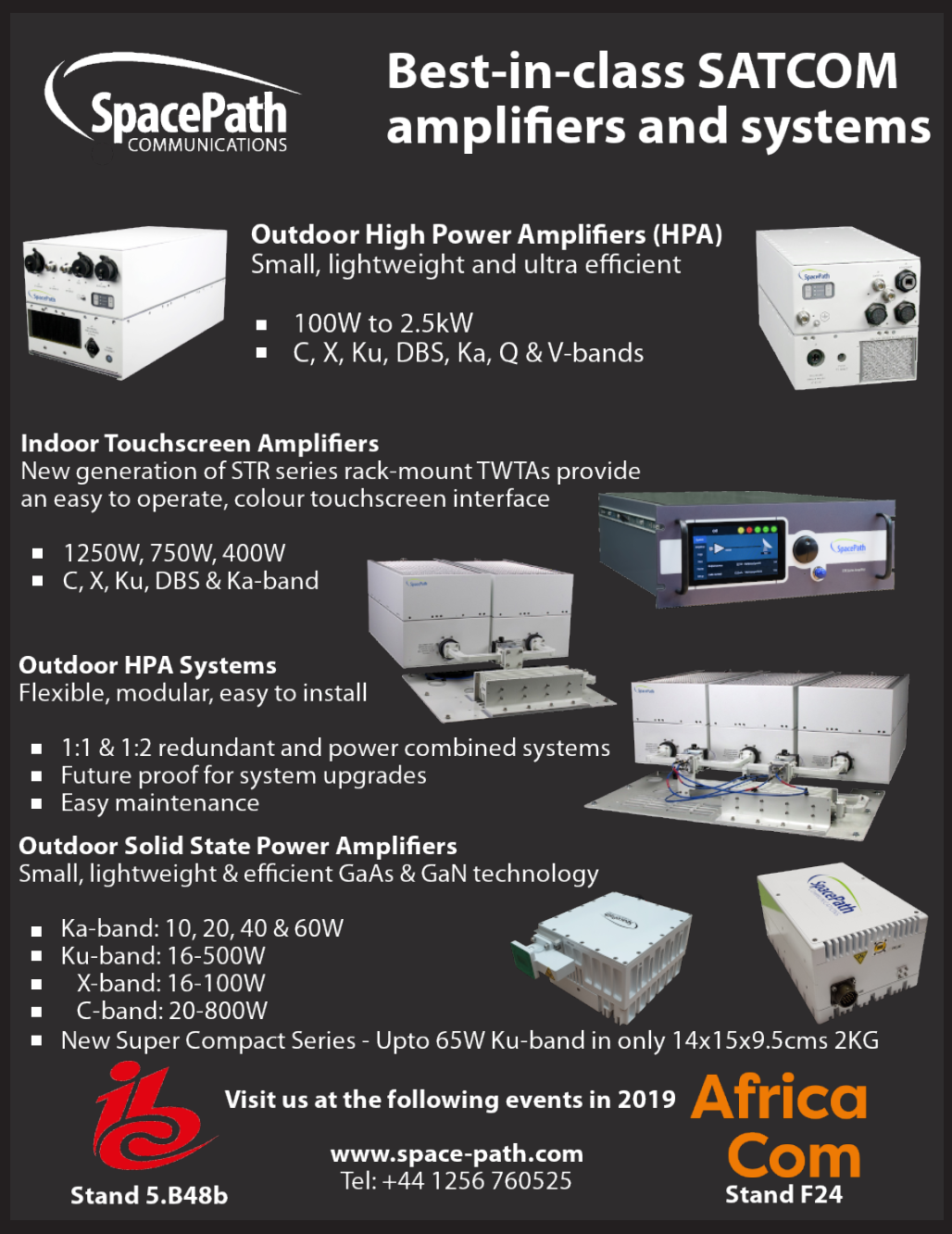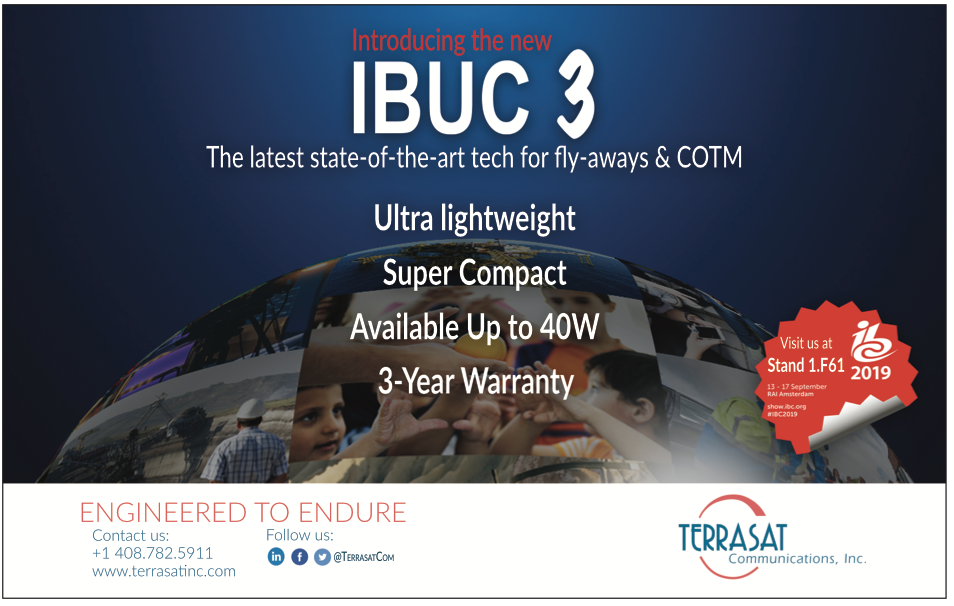Ms. Shoffner, would you please tell our readers what products and services your company provides?

Heather Shoffner (HS)
Roccor is a Colorado-based, fast-growing, high-technology product supplier to a disruptive small satellite segment of the aerospace and defense market.
Our products address cost and performance challenges sought by our customers seeking to revolutionize spaceflight and military operations. We have contracts with NASA, the U.S. military, and commercial space companies all around the world and already have several deployable systems in orbit and numerous additional systems delivered and planned for launch this year.
Roccor provides comprehensive design and development expertise as well as in-depth analysis throughout the development cycle. Our Cognizant Engineers get early prototypes in front of Manufacturing and Test and continually collaborate with those teams through build, test, and delivery.
Our products include orbital decelerators for satellite debris mitigation, solar arrays, antennas, deployable booms for satellites, and advanced power and thermal control systems.
For each of our clients, it’s all about affordable, efficient, and customized approaches, big impact, and practical solutions to complex problems.
How has the smallsat revolution affected your business?
HS
What’s driving the revolution is that development cycles for satellite systems are shrinking. What used to take three to five years, is now taking nine to 18 months. The time it takes to take an idea from a white sheet of paper to a piece of hardware and out the door has reduced by a factor of four.
From an operational standpoint, this revolution emphasizes the need for us to be able to reduce the noise and waste in our processes, especially when it comes to design and development. The revolution is driven by the fact that our customers’ needs have changed. They need it better, cheaper, and faster.
And, not only are customers demanding a faster development cycle, they are also demanding lower price points. But, all the while, the system metrics haven’t changed.
We, from an operations and project management standpoint, have become more agile, all the way from billing to work orders to execution so that we can respond to these changing customer needs.
At Roccor, we focus on our resources to accomplish the work and work in “sprints.” This allows us to prototype and iterate quickly, and to manufacture and test early – and all along the process – so that what we learn along the way informs the ultimate design.
We’re responding to the revolution in how we structure our teams internally, as well. Everyone from the most senior and experienced technician or engineer to the intern is involved in our builds and is in regular – even constant – collaboration with each other and with our customers every step of the way.

That’s how we hire, it’s how we innovate, it’s how we grow, and it’s how we ensure quality. And, it’s how we have developed our employee ownership culture, where everyone shares in the responsibility, the learning process, and in the successes.
Who are the most important customers for Roccor?
HS
We are fortunate to work with a who’s who list of aerospace customers including many traditional satellite primes like Boeing, Lockheed Martin, and Ball Aerospace and emerging “new space” primes like General Atomics, PlanetIQ, and Blue Canyon.
We also have a growing list of NASA science mission clients and defense-classified program clients that are seeking “new space” systems that can provide better solutions for civil space and military supremacy.
We are partnering with the new space crowd; organizations that are working on making world-class satellite constellations economically viable. Many of them are backed by private equity and investors that believe the satellite revolution is going to bring big business. We think so too.
In the past, when we met with customers, the conversations often started with them saying to us, “I don’t have time or the money, and what we need seems impossible.” Today the conversation is very different. Instead, the tone and focus have shifted to, “How can do we do this?” Customers that think like this are our most important. Because together — with that collaboration and enthusiasm — things get done, the envelope gets pushed, and quite literally, Space opens up.
What changes have you made to operations in order to be competitive?
HS
As we are expanding in the areas of aerospace and defense with solar arrays, RF antennas and de-orbit, and custom deployable and thermal management product lines, our focus is on maintaining product excellence and customer satisfaction.
We have formalized a cohesive operations team and set some very concrete strategic goals for the company. We are experiencing and planning for growth, so we have put in place a support structure that aligns with that and that enables the execution of the work we’re doing for clients.
In addition, we have doubled the size of our facility. We have a dedicated maker space for rapid prototyping and concept proving. In most companies, engineers and technicians are segregated and compartmentalized. Not at Roccor. We’ve integrated the entire company and we are consciously optimizing the flow of everything.
The efficiencies we have gained over the last two years are on the order of high double digits, 30 to 70 percent. The Roccor approach is the antithesis of standard aerospace industry program management practice, or what some call Waterfall Program Management.
We’re the opposite. The buzzword around Roccor is “agility.” We are planning and executing with an awareness and acceptance that requirements are going to shift. We advance, welcome change, all the while knowing that we will pivot at some point, or more likely, many points, along the way. You can only do that on a fast sprint cycle (days vs. months).
This is the essence of how we think, and it is a game-changer as a company because it lines up with the customer demand to get what they need better, faster, cheaper and still highly effective and of high quality. And, that efficiency works because of the collaboration we have with our customers. There is constant feedback.
We are nowhere near the old days where a product was designed, called “good to go,” and THEN given to the customer. Even months are too long for a customer to wait. We have regular check-ins and conversations with our customers; weekly, sometimes daily. And, our customers love this. This is how we organically establish expectations and how we keep milestones fluid.
At Roccor, we are working to change paradigms, we’re proving to our customers that our approach works, and we believe others in the industry will follow.
Why do innovation and rapid development count?
HS
Engineering of traditional satellites is all about risk reduction. The solution with the lowest possible risk is usually the preferred solution and the engineering team often has to leave a lot of creativity left on the table. But, that’s not the world we live in anymore.

New small satellite constellations are being designed primarily for performance and with a greater tolerance for risk. Finding the correct balance between risk and performance means you can’t be overly committed to your bias and you have to come up with creative and innovative solutions to solve problems quickly. You have to be willing to look past the way we’ve always done things.
In this industry, there is a tendency to over-design. Our approach to innovation – which is a broad term – is about elegance and simplicity. Simplicity means fewer parts, fewer parts mean fewer things going wrong, simplicity means less expensive. We’re challenged every day come up with creative solutions for complex problems.
Where do you expect your business to be in the next two to three years?
HS
First of all, we fundamentally believe new space isn’t a fad anymore – it is the most rapidly growing segment of the global satellite industry. If the U.S. satellite supply chain doesn’t figure out how to meet the needs of this market we are at risk of losing aerospace business to the global market.
Numerous, well-capitalized satellite operations companies are shopping around to get the most for the least amount of money. Companies have to figure out how to innovate for much less money and in a much faster timeframe. And addressing this supply chain dilemma is at the core of Roccor’s business goals.
For the past five years, we have seen a steady growth in interest and opportunity for our company as a Tier 2 supplier to the small satellite industry. Our projects have been mostly in support of initial orbital demonstration missions that will blossom into hundred-satellite constellations in the near future.
As we look ahead to the next 2 to 3 years, we anticipate continued growth across all of our product lines especially in the number of high-volume production programs we will be executing for these satellite constellation providers.
The Roccor of the near future will look more like a commercial aircraft company of today with high-volume production staff growing quickly to balance our ever-growing engineering staff.
Why is Roccor succeeding?
HS
In two words: customer service. The aerospace industry tends to put little focus on customer service, or transparency, or collaboration. We do, and we are finding that the industry is thirsty for this kind of supply chain partner.
We’re part of a revolution and we can’t do it by ourselves. We have to be grounded in authenticity, partnerships, building relationships with our customers, and on welcoming the challenge to come up with product designs that are elegant, easily proven, and even sometimes disruptive of old paradigms. Our customers’ happiness factor is incredibly high. Along the way, their happiness is the freshness of learning new ways to develop space-qualified products. In the end, their happiness is the satisfaction of receiving a product more quickly than they are used to and knowing that it works.
What we’ve learned is that it’s not as simple as running faster. It’s about reducing the noise and creating workflow and efficiencies within the company that allows people to focus and actually produce more.
Of course, it’s also about having incredibly talented and creative people who want to find those efficiencies within themselves. When we get it right it’s not frantic. It’s about figuring out how to get there taking the fewest number of steps.
roccor.com/



